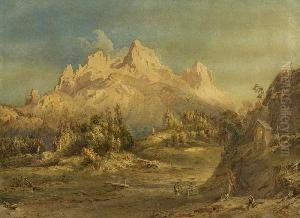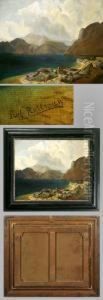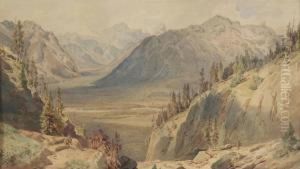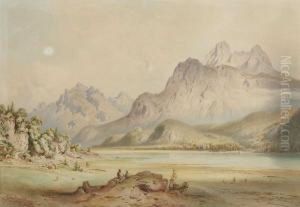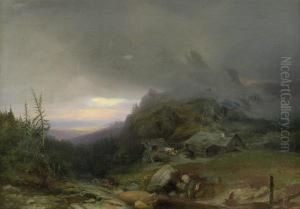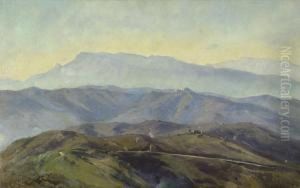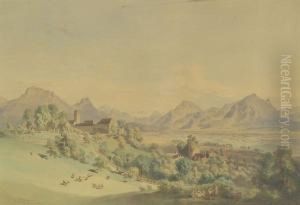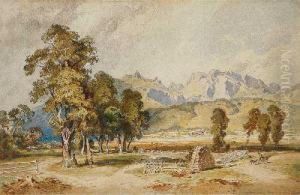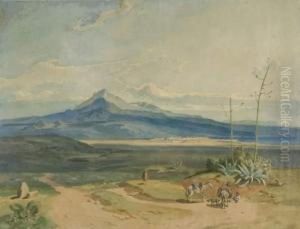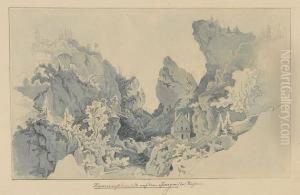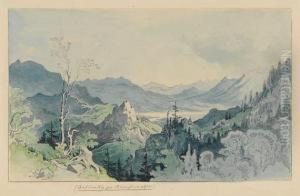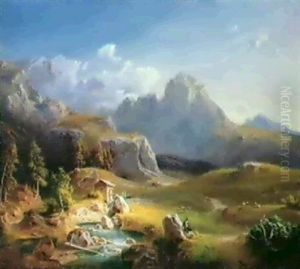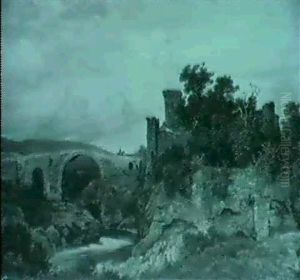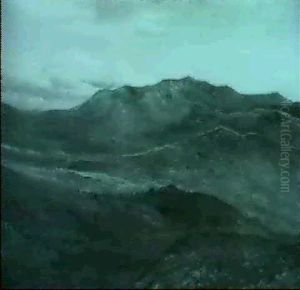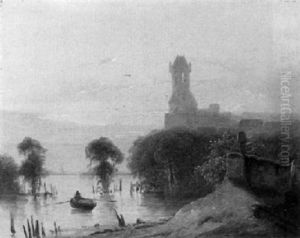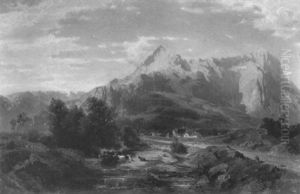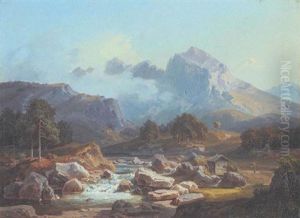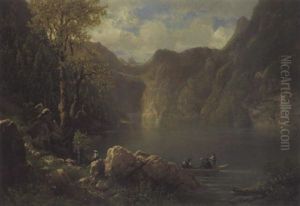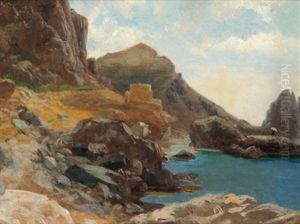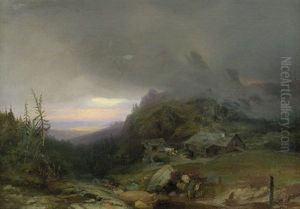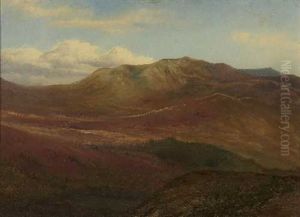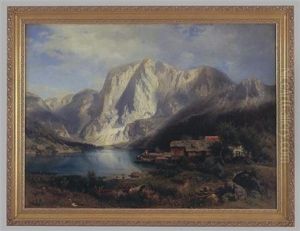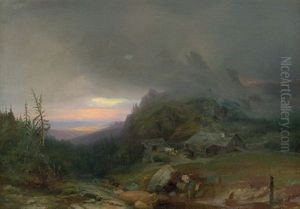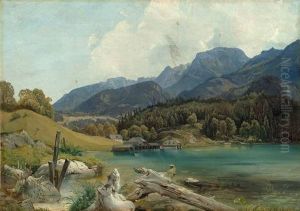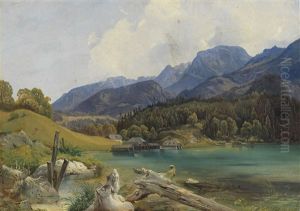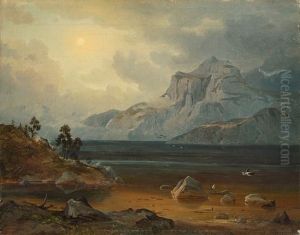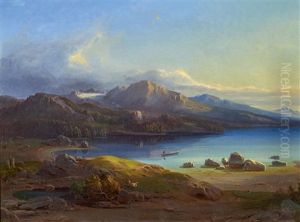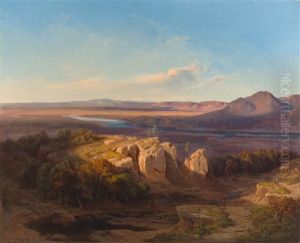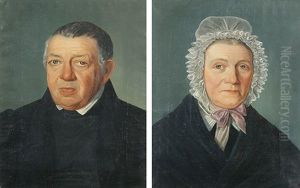Leopold Rottmann Paintings
Leopold Rottmann was a German landscape painter known for his atmospheric depictions of nature and ability to capture the mood of a scene. Born on May 12, 1812, in Handschuhsheim (now a part of Heidelberg), Rottmann showed an early interest in art, which was encouraged by his father, a university drawing professor.
His initial training was under his father's guidance, and he later attended the Munich Academy of Fine Arts, where he continued to refine his skills. Rottmann's art was significantly influenced by the works of the Romantic landscape painter Carl Rottmann (no relation), whose style and approach to landscape painting left a lasting impression on him.
Throughout his career, Leopold Rottmann focused on capturing the essence of the German countryside, Italian landscapes, and Greek vistas. His travels through these regions provided him with ample inspiration, and his paintings often reflected a serene and idyllic quality. Rottmann was adept at using light and shadow to create depth and atmosphere in his works, which earned him considerable acclaim during his lifetime.
He became a court painter for King Ludwig I of Bavaria, which provided him with both recognition and financial support. This patronage allowed Rottmann to continue honing his craft and producing landscapes that not only depicted the physical beauty of nature but also conveyed a sense of the sublime and the emotional resonance of the environment.
Rottmann's paintings were celebrated for their poetic quality and for their ability to transport viewers to the places he depicted. His works are characterized by a fine attention to detail and a masterful use of color. Unfortunately, many of his frescoes in Munich have been lost over time, but his oil paintings continue to be admired for their beauty and technical skill.
Leopold Rottmann passed away on July 25, 1881, in Munich. Today, his legacy lives on through his contributions to the genre of landscape painting, and his works can be found in various art collections and museums, serving as a testament to his talent and his passion for the natural world.
